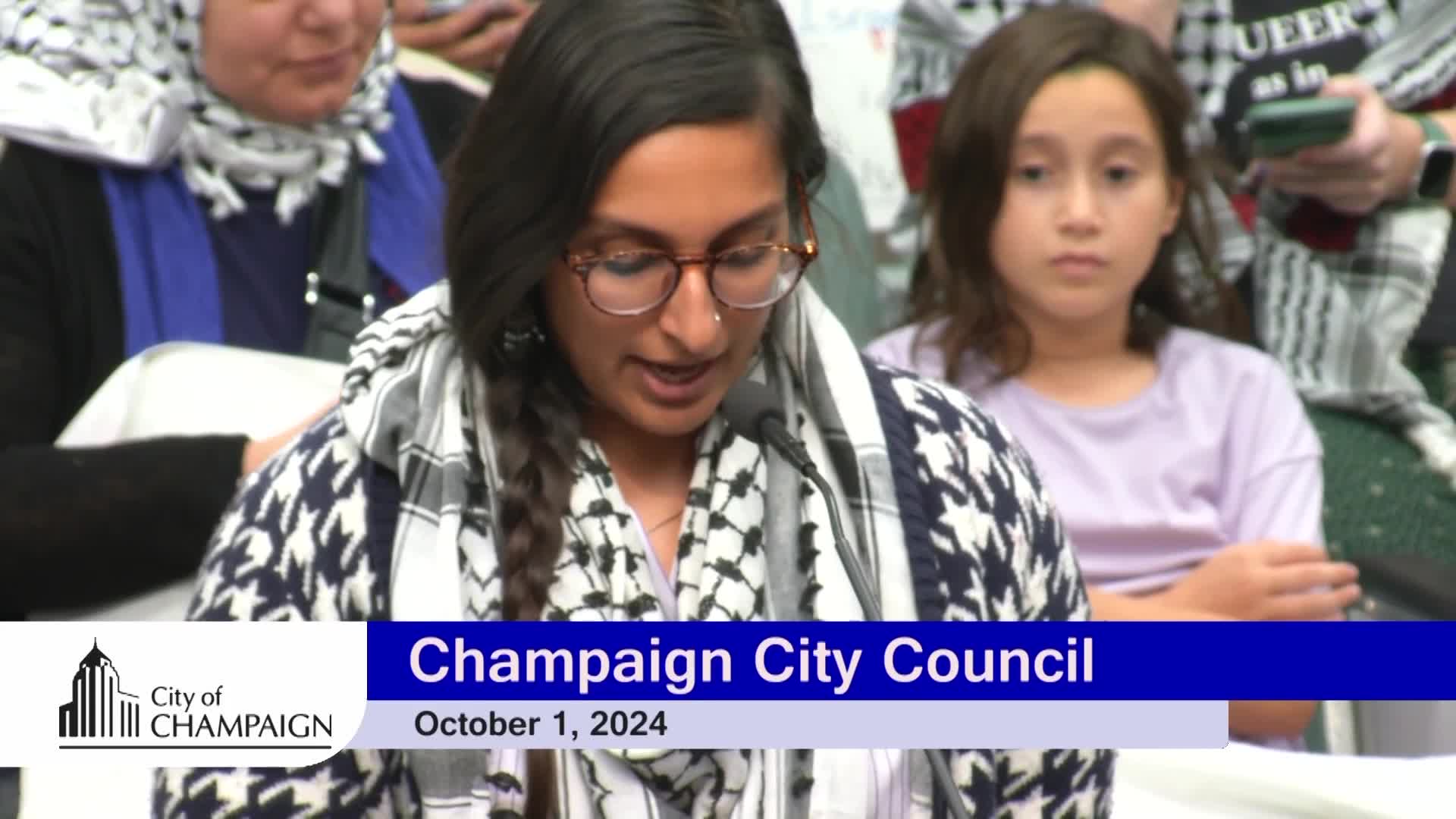Historic landmarks in Gaza face devastating destruction
October 01, 2024 | Champaign, Champaign County, Illinois
This article was created by AI summarizing key points discussed. AI makes mistakes, so for full details and context, please refer to the video of the full meeting. Please report any errors so we can fix them. Report an error »

In a recent government meeting, significant discussions emerged regarding the destruction of historical and cultural landmarks in Gaza amid ongoing conflict. The Palestinian Ministry of Culture reported that since October 7, 207 out of 320 archaeological sites and buildings of cultural significance have been severely damaged or reduced to rubble due to Israeli bombardments. This preliminary assessment, based on local eyewitness accounts and satellite imagery, highlights the extensive loss of heritage, including mosques, churches, cemeteries, museums, and libraries.
Notable sites affected include ancient archaeological locations along the coast, such as Telesakan and Tel Rakesh, which have suffered severe damage. The del Dar al Bala site, known for its Philistine cemetery dating back to the late Bronze Age, has also been impacted. Additionally, a warehouse in the Sheikh Ridwan neighborhood, containing over 4,000 archaeological objects, remains unaccounted for after being seized by the Israeli army.
The meeting underscored the historical significance of various sites, including the Saint Hilaire Monastery, which honors a key figure in monasticism in Palestine, and the Orthodox Church of Saint Porphyrios, one of the world's oldest churches, where tragic casualties among Christian Palestinians were reported last year.
The core of Gaza's old city has faced relentless devastation, with 144 historical monuments destroyed, including the Grama Omari mosque, originally a Crusader cathedral, and the last remaining Mamluk-era public bathhouse, Hamam al Samara. The Pasha's Palace, recently renovated into an archaeological museum, has also largely been destroyed, alongside significant damage to local museums, such as the Al Karara Cultural Museum and the Rafa Museum.
These discussions reflect a growing concern over the cultural heritage at risk in conflict zones, emphasizing the need for international awareness and action to preserve these irreplaceable sites.
Notable sites affected include ancient archaeological locations along the coast, such as Telesakan and Tel Rakesh, which have suffered severe damage. The del Dar al Bala site, known for its Philistine cemetery dating back to the late Bronze Age, has also been impacted. Additionally, a warehouse in the Sheikh Ridwan neighborhood, containing over 4,000 archaeological objects, remains unaccounted for after being seized by the Israeli army.
The meeting underscored the historical significance of various sites, including the Saint Hilaire Monastery, which honors a key figure in monasticism in Palestine, and the Orthodox Church of Saint Porphyrios, one of the world's oldest churches, where tragic casualties among Christian Palestinians were reported last year.
The core of Gaza's old city has faced relentless devastation, with 144 historical monuments destroyed, including the Grama Omari mosque, originally a Crusader cathedral, and the last remaining Mamluk-era public bathhouse, Hamam al Samara. The Pasha's Palace, recently renovated into an archaeological museum, has also largely been destroyed, alongside significant damage to local museums, such as the Al Karara Cultural Museum and the Rafa Museum.
These discussions reflect a growing concern over the cultural heritage at risk in conflict zones, emphasizing the need for international awareness and action to preserve these irreplaceable sites.
View full meeting
This article is based on a recent meeting—watch the full video and explore the complete transcript for deeper insights into the discussion.
View full meeting
